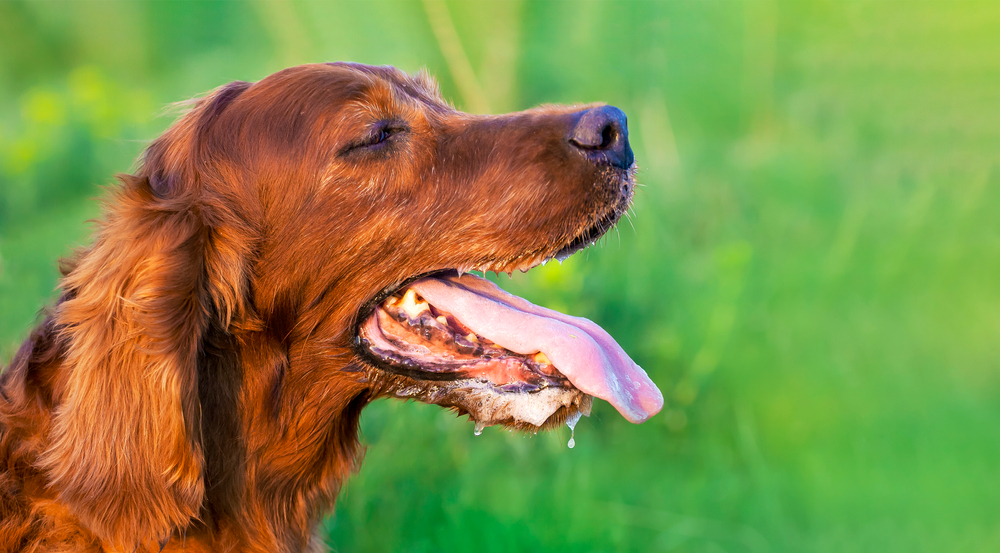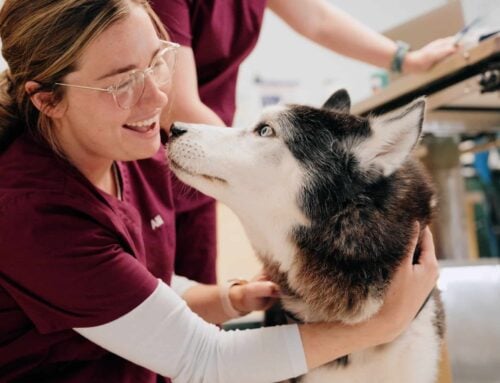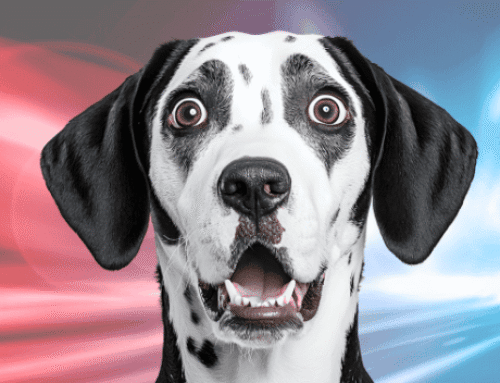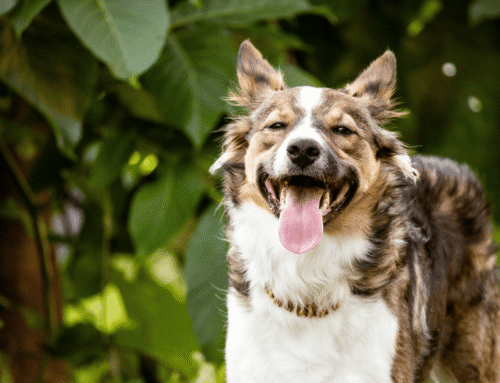As a dog owner, you have likely seen your furry friend pant after vigorous exercise, during hot weather, or when they’re excited about seeing another dog. Dogs pant frequently, and while the behavior may seem like a simple quirk, panting is a vital mechanism for their health and well-being. Our Shuler Veterinary Clinic team explains dog panting’s mechanisms, what’s normal, and when to be concerned.
Dogs pant to regulate their body temperature
Panting’s primary function is to enable dogs and certain other mammals to stay calm and release heat. These functions include:
- Primary cooling mechanisms — Dogs have a limited number of sweat glands, primarily located in their paw pads and noses. Because these sweat glands are insufficient for cooling their entire body, a dog relies on panting as their main method of regulating body temperature. When a dog pants, the rapid, shallow breathing allows moisture to evaporate from their tongue, nasal passages, and lungs, effectively releasing heat.
- Heat dissipation — Panting increases water evaporation from a dog’s body, which helps cool their blood. The cooler blood then circulates through their body, lowering their internal temperature. Heat dissipation is particularly crucial during hot weather or after vigorous exercise.
Dogs pant during physical exertion
During exercise and other physical activities, a dog’s muscles require more oxygen to sustain energy production. Panting allows for increased airflow into the lungs, thereby boosting oxygen intake and facilitating carbon dioxide removal from the bloodstream. If your dog is panting excessively, take a break, offer them water, and allow them to relax before resuming physical activity.
Dogs pant when excited or stressed
Excitement, fear, anxiety, and stress can also cause a dog to pant. Several emotionally triggering events can cause increased panting in your dog, including:
- Thunderstorms
- Veterinary visits
- Fireworks
- Sirens and alarms
- Animal and pet sightings
- Car trips
Your furry friend may even pant more out of excitement when you come home from work or from running errands. When a dog is happy, anxious, or scared, their body responds by increasing their heart and respiratory rates.
Dogs may pant when they are in pain
Pain and discomfort caused by injury, illness, or a chronic medical condition, such as arthritis or a gastrointestinal (GI) issue, can increase panting in dogs. If your dog’s panting is accompanied by other health signs, such as whining, lethargy, or behavior changes, consult with our Shuler Veterinary Clinic team. By addressing the situation early, our team can treat your furry friend’s pain or underlying condition.
Dogs sometimes pant when they have a health condition
Specific medical issues can cause excessive panting. For example, heart disease, Cushing’s disease, respiratory disorders, obesity, and metabolic disorders can all lead to increased panting. These conditions affect a dog’s ability to breathe normally or regulate their body temperature effectively. If your pet is diagnosed with a chronic illness and is panting more than usual, contact our team for an evaluation.
Dogs pant more during hot weather
Hot and humid temperatures can increase a dog’s need to pant to regulate their body temperature. However, exposure to heat over extended periods can result in hyperthermia and heatstroke. Heatstroke is a severe and potentially life-threatening condition when the body temperature rises excessively. Common causes include being left in a hot car, overexertion in hot weather, or inadequate shade and water. Dogs’ heatstroke signs include excessive panting, drooling, lethargy, disorientation, and collapse. Always seek immediate veterinary attention if you suspect your pet has developed heatstroke.
Recognizing abnormal panting in dogs
While panting is a normal and essential behavior in dogs, you need to recognize when panting indicates a health problem. Abnormal panting signs include:
- Excessive or prolonged panting — If your dog is panting heavily for an extended period, especially without a clear cause, such as exercise or heat, they may need medical attention.
- Changes in panting patterns — Sudden changes in how your dog pants, such as more frequent or labored breathing, can be a red flag.
- Accompanying signs — If panting is accompanied by coughing, lethargy, vomiting, or appetite changes, a visit to our clinic is advised.
Panting is a multifaceted canine behavior that serves as a critical function for body temperature regulation, an indicator of physical exertion, a response to emotional stimuli, and a potential medical issue. By understanding why your dog is panting, you can determine whether the behavior is normal or warrants a veterinary visit. When in doubt about your furry friend’s panting, contact our Shuler Veterinary Clinic team.









Leave A Comment